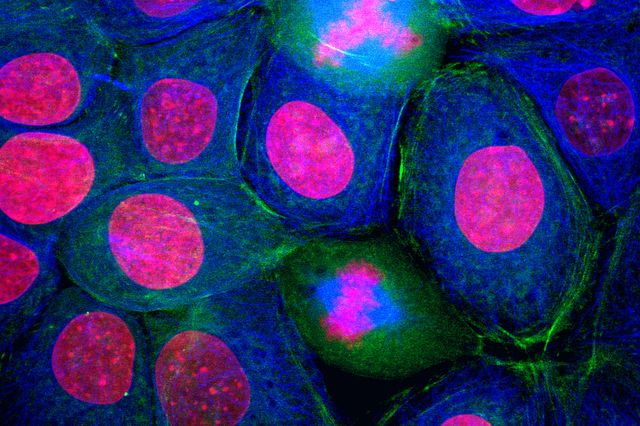PDX models in Cancer
- Freya Mehta
- Mar 3, 2024
- 2 min read
by Freya Mehta
Credits: Charles river
Animal models such as Genome-Edited Mice (GEMs) and Patient-Derived Organoids (PDOs) have been used to study cancer biology and capture the cancer landscape. [1] However in this article we will be focusing on Patient-Derived Xenografts (PDXs) - a research model where the tumour derived from the patient is implanted into a mouse, so the tumour can be studied in a biological host.
To create a PDX model, a small sample of tumour tissue is extracted from a cancer patient during surgery or biopsy. The tumour tissue is processed to remove any healthy cells. The processed tumour tissue is implanted into an immunocompromised mouse, typically under the skin or into an organ that is relevant to the type of cancer. The tumour tissue grows in the mouse, resulting in a tumour that closely resembles the original patient's cancer. Researchers can then use the PDX model (the mouse) to study the cancer, and then can identify treatments that are most effective for the specific DNA variants found within the tumour. Once an effective treatment is found, it can then also be used in future clinical trials on tumours with a similar genetic profile. [2]
PDX models are more accurate than traditional cancer cell lines, because they preserve the genetic and biological characteristics of the original patient's cancer. [3]
These models can be used to predict how a patient's cancer will respond to different treatments. They have the potential to become much needed robust biomarkers that, can classify patients who will show resistance, patients who will respond to therapies, and patients who are in need of new pharmaceuticals. [4]
They can be used to develop personalised treatment plans for cancer patients. [5] This also leads into allowing healthcare providers to shift emphasis in medicine from reaction to prevention. PDX Models allow for the testing of new drugs efficiently, resulting in reduced cost and failure rate of clinical trials, as scientists are able to observe the outcomes of various treatments before administering them to patients.
Therefore, they are used in many studies, such as the development of anti-cancer drugs, co-clinical trials, personalised medicine, immunotherapy, and PDX biobanks. [6]
Despite these advantages, some setbacks still remain regarding this technology. It can be expensive and time-consuming to create and maintain PDX models, in fact, according to Dr Chuang, ‘to fully establish a model can take from 6 months to a year. [7] Additionally, there are ethical considerations involved in using human tissues and mice in research, even if it is for the better. Having said that, the PDX mouse model remains a huge step forward in the field of personalised medicine, cancer and genetics.
Citations
[1] Ramzy GM, Koessler T, Ducrey E, et al. Patient-Derived In Vitro Models for Drug Discovery in Colorectal Carcinoma. Cancers (Basel). 2020;12(6):1423. Published 2020 May 31. doi:10.3390/cancers12061423
https://pubmed.ncbi.nlm.nih.gov/32486365/
[2] The Jackson Laboratory | Minute to Understanding: What is a PDX mouse?
https://www.jax.org/news-and-insights/minute-to-understanding/what-is-a-pdx-mouse
[3] Charles River | Humanized Mouse Model in Tumor Studies https://www.criver.com/products-services/discovery-services/pharmacology-studies/oncology-immuno-oncology-studies/oncology-models/humanized-mice-tumor-studies?region=3696
[4] Liu, Y., Wu, W., Cai, C. et al. Patient-derived xenograft models in cancer therapy: technologies and applications. Sig Transduct Target Ther 8, 160 (2023). https://doi.org/10.1038/s41392-023-01419-2
https://www.nature.com/articles/s41392-023-01419-2#Sec1
[5] The Jackson Laboratory | What is personalized medicine?
https://www.jax.org/personalized-medicine/precision-medicine-and-you/what-is-precision-medicine
[6] Abdolahi, S., Ghazvinian, Z., Muhammadnejad, S. et al. Patient-derived xenograft (PDX) models, applications and challenges in cancer research. J Transl Med 20, 206 (2022). https://doi.org/10.1186/s12967-022-03405-8
https://translational-medicine.biomedcentral.com/articles/10.1186/s12967-022-03405-8
[7] National Cancer Institute | PDX Mouse Models Are Reliable Stand-Ins for Human Tumors, Study Finds https://www.cancer.gov/news-events/cancer-currents-blog/2021/cancer-pdx-mouse-models-retain-genetics-human-tumor

Comments